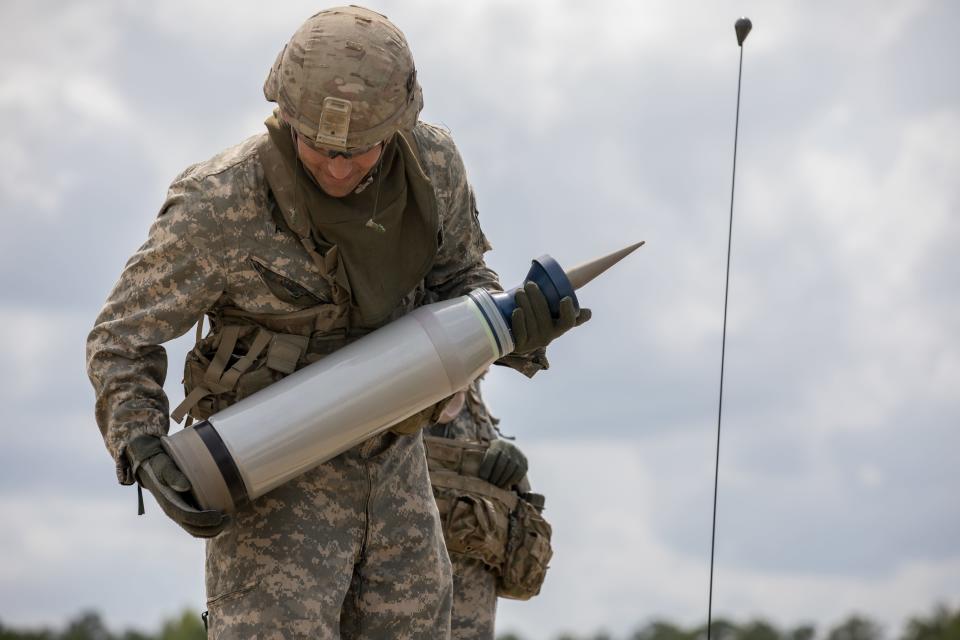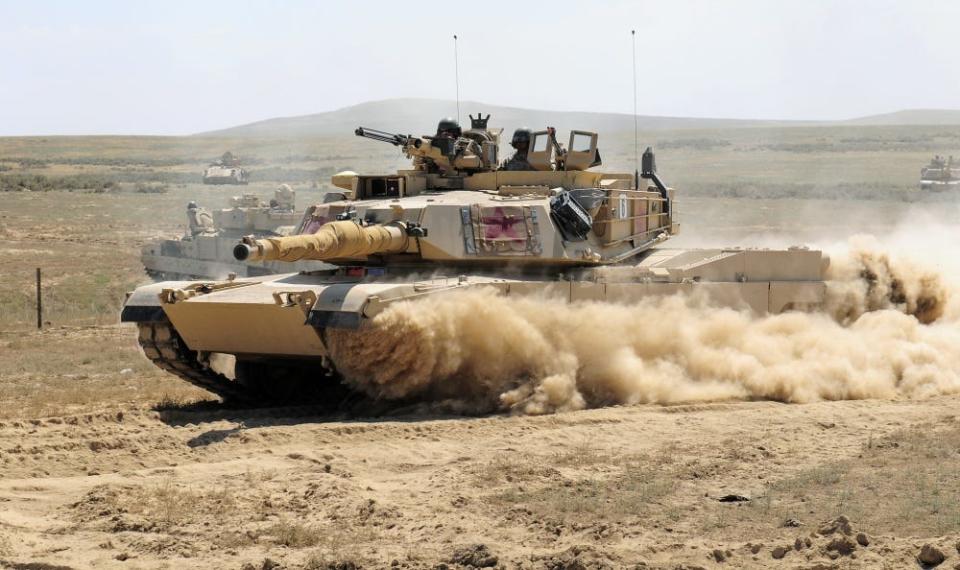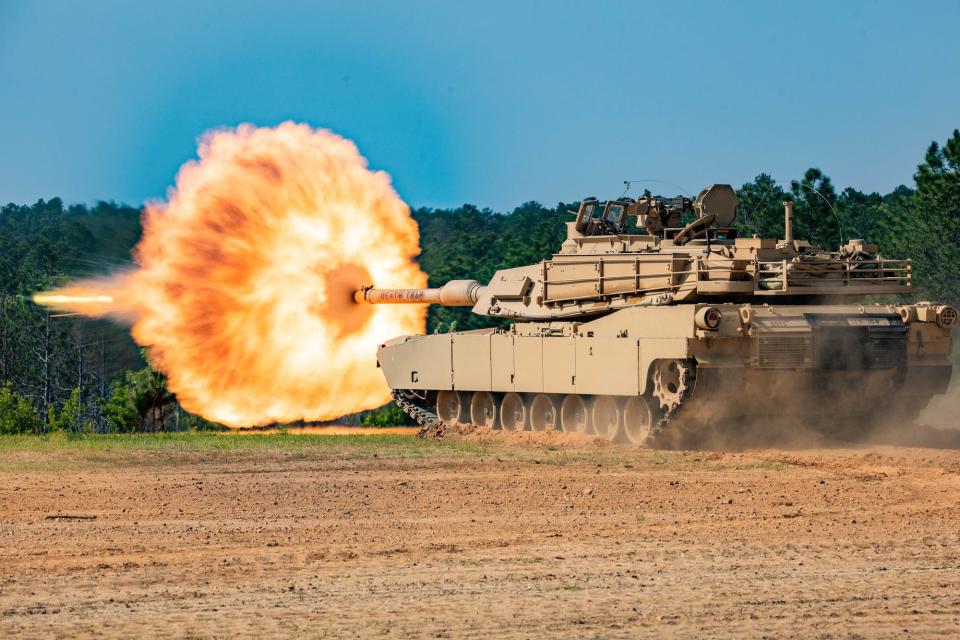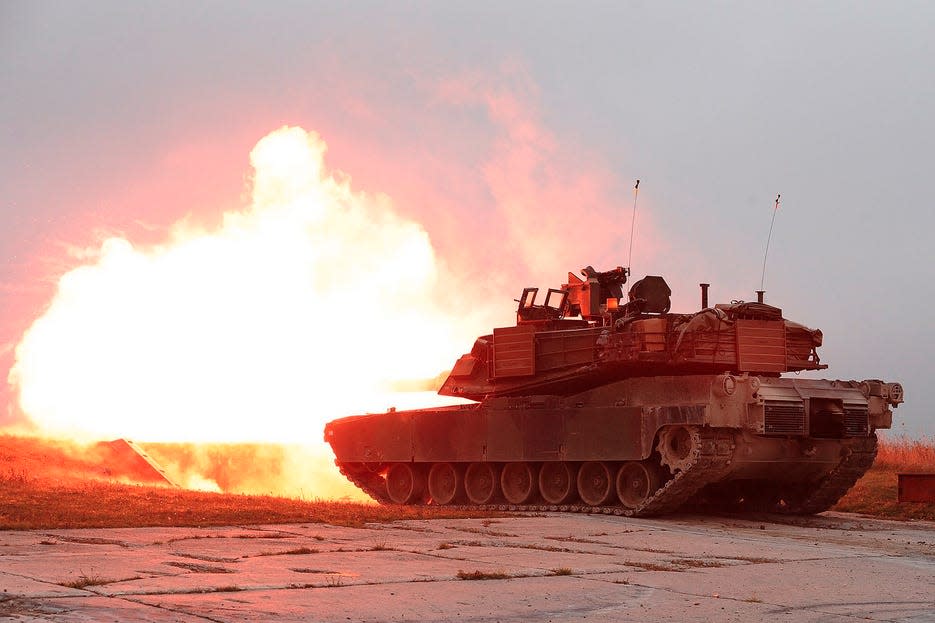M1 Abrams tank fires a round from its cannon.US European Command Photo
- Reports say the US is expected to send Ukraine depleted-uranium tank rounds along with M1 Abrams tanks.
- The rounds do what other tank rounds don’t, like sharpening on impact and starting fires.
- A retired US Army general told Insider that these rounds are more likely to break through even hard-to-beat armor.
It looks like the new Western-made tanks being added to Ukraine’s growing armored arsenal are going to come with hard-hitting rounds that its forces can use to punch holes in Russia’s tanks and wreak havoc inside.
The US, which has already promised to send Ukraine its combat-proven M1 Abrams tanks, is expected to follow in the UK’s footsteps and also send armor-piercing depleted-uranium tank rounds designed to defeat even hard-to-beat armor.
These rounds do what others do not, retired US Army Lt. Gen. Thomas Spoehr, who served with the 1st Armored Division during his nearly four decades in the military, told Insider.
“With a tank round, it’s all about getting inside the tank, penetrating the armor and getting into the crew compartment and destroying the tank,” he said. Two options for achieving this are shaped charges and penetrators.
Penetrators are rods that look like an arrow and are a couple feet long and roughly as thick as a shovel handle. The complete round, which consists of a primer, propellant, a discardable sabot for moving it along the tank barrel, and the penetrator, are more robust and capable than shaped charges and better for pinpoint kinetic strikes at range in tank-on-tank battles.
These armor-piercing sabot rounds rely on dense metals, specifically tungsten or depleted-uranium, to punch through enemy armor. Tungsten is a rare-earth metal, and depleted uranium is a byproduct of the uranium-enrichment process. Russia claims there’s a nuclear component, which isn’t true. There are, however, radioactive effects if depleted uranium enters the body.
“It is all about the density of the metal that’s in your penetrator because you want to hit a tank with a metal that is denser than the armor of the tank,” Spoehr, director of the Center for National Defense at the Heritage Foundation, said.
“If you can do that at the right speed,” he continued, “then you stand a pretty good chance of getting through the armor on the tank” to score a potential kill. Some penetrator tank rounds, like the American M829 for the Abrams tanks, can achieve muzzle velocities greater than 5,000 feet per second, though that’s not the speed at the point of impact when it strikes.

The US military has employed both tungsten and depleted-uranium penetrators. Both are dense metals, but secondary characteristics make depleted-uranium rounds particularly effective.
One, depleted-uranium rounds sharpen kind of like a pencil as they penetrate enemy armor, giving them a better chance of busting through it. Tungsten rounds don’t do that. Instead, they strike like a hammer and sort of flatten out or mushroom on impact.
Two, depleted-uranium tank rounds are pyrophoric, which means they burst into flame under intense heat and pressure.
When the rod penetrates the armor of an enemy tank, explodes, and shatters, the pieces ignite inside, causing fires that can then ignite the ammunition, kill the crew, and destroy the tank more effectively than metal shrapnel alone.

Three, the depleted-uranium tank rounds are more durable than the tungsten penetrator rounds, which are more brittle and are, therefore, more vulnerable to the effects of explosive reactive armor.
Reactive armor is a type of vehicle armor that uses outward explosive force to either pre-detonate a shaped charge or break, repel, or deflect a penetrator, preventing it from functioning effectively.
Explosive reactive tank armor “kind of increases the chance that the penetrator will not hit at the correct angle,” Spoehr said.
The Russians use this type of defense pretty extensively. Jack Watling, a land warfare expert at the Royal United Services Institute, previously told Insider “it is pretty rare to find a Russian tank” where the vehicle crew “hasn’t blasted ERA on every single surface they can conceivably get it on.”
In Ukraine right now, tank-on-tank battles are relatively uncommon compared to other engagements.
But in those tank fights, Russian tanks have been well protected by the added reactive armor that “has proven highly effective” against most anti-tank systems, Watling and fellow land warfare expert Nick Reynolds reported recently in a detailed look at evolving Russian tactics. This armor has done especially well against barrel-launched anti-tank guided missiles.

The depleted-uranium penetrator rounds “are better suited to not being destroyed by reactive armor,” Spoehr said, adding that “they hold up well.”
“They’re not snapped or broken easily, so they typically are not defeated by reactive armor,” he said.
These capable rounds are “able to withstand the kinetic forces of the explosion of the reactive armor better than most metals,” Spoehr said. “That is not to say reactive armor can’t defeat one of these, but you’re more likely to get inside a tank with a depleted-uranium penetrator, even if it has reactive armor.”
Tank rounds, of course, aren’t the only way to defeat an enemy tank.
Other options include anti-tank mines, drones, artillery, and anti-tank guided missiles like the FGM-148 Javelins that use shaped charge HEAT warheads to defeat reactive armor and have been extremely effective in the war in Ukraine.
The threat posed by certain anti-tank guided missiles have led Russia, which has lost nearly 2,000 tanks over the course of the war, to change up its tank operations, exercising more caution but doing so at the expense of the kind of breakthrough and assault operations that make tanks useful.

